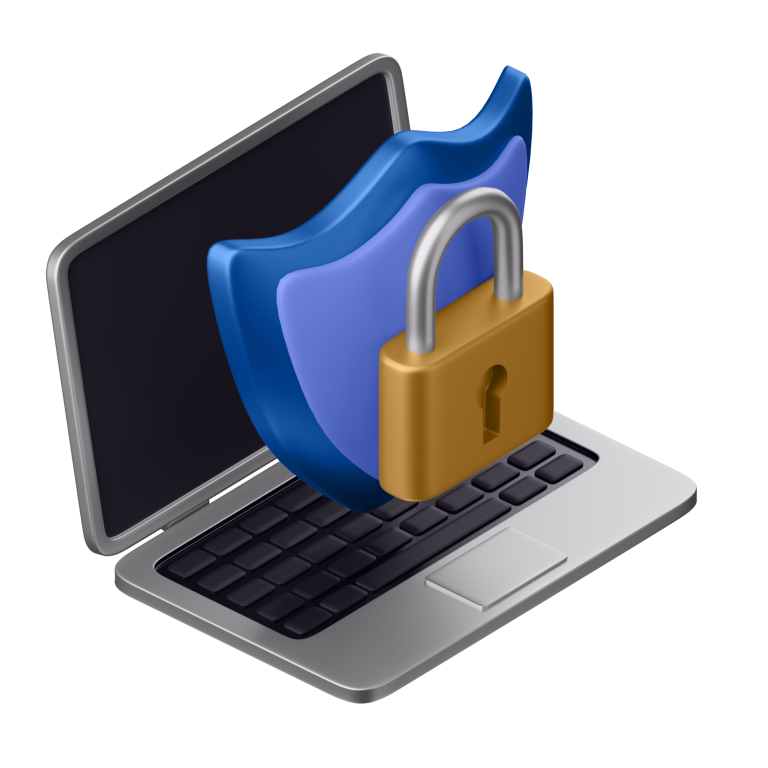Top Challenges

Cyber Threat Detection

Incident Response

Data Loss Prevention

Cyber Threat Detection

Incident Response

Data Loss Prevention
Cyber Threat Detection
CHALLENGES
Identifying threats across IT layers requires advanced capabilities and real-time monitoring amid evolving attack vectors and entry points, demanding robust detection mechanisms and skilled personnel.
Consequences
Ineffective threat detection leads to undetected breaches, prolonged exposure to cyber threats, compromised data integrity, and increased vulnerability to cyber attacks, resulting in financial losses and reputational damage.
Scenario 1: Advanced Persistent Threat (APT)
A sophisticated APT infiltrates the organization's network, bypassing traditional security measures. Despite perimeter defenses, the APT evades detection for months, exfiltrating sensitive data unnoticed. It exploits vulnerabilities in legacy systems, highlighting the need for continuous monitoring and advanced threat detection capabilities.
Scenario 2: Insider Threat
An insider with legitimate access exploits their privileges to steal sensitive information gradually. Traditional security measures fail to detect the subtle data exfiltration over time. The organization faces significant data loss and reputational damage, underscoring the importance of proactive threat detection and user behavior monitoring.
Scenario 3: Zero-Day Exploit
A zero-day exploit targets a critical vulnerability in the organization's software, bypassing signature-based detection. The attack goes undetected as it leverages unknown vulnerabilities, causing widespread damage before a patch is developed. It emphasizes the necessity of behavior-based anomaly detection and rapid threat response mechanisms.
Scenario 4: The Cross-Platform Patchwork
A multinational corporation tries to streamline its security operations by integrating various platforms across its global offices. The effort results in inconsistencies and operational inefficiencies, stressing the need for a more harmonized approach to security integration.
Advanced Persistent Threat (APT)
A sophisticated APT infiltrates the organization's network, bypassing traditional security measures. Despite perimeter defenses, the APT evades detection for months, exfiltrating sensitive data unnoticed. It exploits vulnerabilities in legacy systems, highlighting the need for continuous monitoring and advanced threat detection capabilities.
Insider Threat
An insider with legitimate access exploits their privileges to steal sensitive information gradually. Traditional security measures fail to detect the subtle data exfiltration over time. The organization faces significant data loss and reputational damage, underscoring the importance of proactive threat detection and user behavior monitoring.
Zero-Day Exploit
A zero-day exploit targets a critical vulnerability in the organization's software, bypassing signature-based detection. The attack goes undetected as it leverages unknown vulnerabilities, causing widespread damage before a patch is developed. It emphasizes the necessity of behavior-based anomaly detection and rapid threat response mechanisms.
The Cross-Platform Patchwork
A multinational corporation tries to streamline its security operations by integrating various platforms across its global offices. The effort results in inconsistencies and operational inefficiencies, stressing the need for a more harmonized approach to security integration.
Incident Response
CHALLENGES
Incident response faces difficulties in timely detection and containment of threats, coordinating effective responses, and minimizing the impact of security incidents across complex IT environments.
Consequences
Inadequate incident response may result in prolonged system downtime, data breaches, financial losses, and reputational damage, exacerbating the impact of security incidents on organizations.
Data Breach Response
An organization discovers unauthorized access to sensitive customer data. Incident responders swiftly isolate affected systems, assess the extent of the breach, and notify affected individuals, mitigating reputational damage and regulatory penalties.
Ransomware Attacker's Oversight
Recovery Following a ransomware attack, incident response teams coordinate efforts to contain the malware, restore encrypted data from backups, and enhance cybersecurity measures to prevent future attacks, minimizing operational disruptions and financial losses.
Insider Threat Investigation
Suspicious activity by an insider prompts an incident response investigation. Teams analyze user behavior, revoke access privileges, and implement tighter access controls to prevent data exfiltration, safeguarding sensitive information and maintaining trust with stakeholders.
Data Loss Prevention
CHALLENGES
Implementing effective Data Loss Prevention (DLP) measures faces hurdles such as identifying sensitive data, enforcing policies across diverse environments, and preventing insider threats without hindering productivity.
Consequences
Without robust DLP solutions, organizations risk data breaches, compliance violations, and reputational damage due to unauthorized data access, accidental leaks, or malicious exfiltration. Loss of intellectual property and customer trust may occur.
Scenario 1: Disgruntled Employee Foiled
In a bid to exfiltrate sensitive customer data, a disgruntled employee devises a plan to email the information to a personal account. Unbeknownst to them, the organization’s robust Data Loss Prevention (DLP) system stands guard, meticulously monitoring all outgoing emails for any signs of unauthorized data transfer.
As the employee initiates the email, the DLP system springs into action, swiftly detecting the anomaly and triggering an alert. With precision, the system automatically blocks the email, thwarting the attempted breach and safeguarding the organization from potential regulatory violations and reputational damage.
Scenario 2: Accidental Disclosure Averted
During a routine data transfer process, an employee mistakenly attaches a file containing highly confidential financial information to an outgoing email. Fortunately, the organization has implemented a comprehensive DLP solution capable of scanning outgoing emails in real-time.
As the employee hits the send button, the DLP system identifies the sensitive file within the email attachment and promptly intervenes. It alerts the employee, prompting them to confirm the intended recipient before proceeding. This prompt action effectively prevents inadvertent data leakage, preserving the confidentiality and integrity of the organization’s sensitive information while minimizing the risk of compliance breaches.
Scenario 3: External Intrusion Thwarted
In a sophisticated cyberattack, an external threat actor infiltrates the organization’s network with the intention of accessing a database containing personally identifiable information (PII). Unbeknownst to the attacker, the organization has fortified its defenses with a robust Data Loss Prevention (DLP) system.
Upon detecting the unauthorized access attempt, the DLP system swiftly identifies the anomaly and triggers an immediate alert to the security team. Simultaneously, it automatically initiates countermeasures, restricting access to the database and preventing any potential data compromise. This proactive defense mechanism not only thwarts the external intrusion but also mitigates the risk of regulatory violations and protects the privacy of sensitive customer data.
Scenario 4: Secure Remote Work Enforcement
A remote employee, working from an unsecured public Wi-Fi network, attempts to download sensitive documents onto their personal device connected to the company network. Recognizing the inherent risks associated with remote work environments, the organization has implemented stringent security measures, including a robust Data Loss Prevention (DLP) solution.
As the employee initiates the download, the DLP system detects the risky behavior and immediately springs into action. Leveraging location-based and device-specific access controls, the system effectively blocks the download, preventing unauthorized exposure of sensitive data. This proactive approach ensures that even in the face of challenging remote work scenarios, the organization’s data remains secure and protected from potential threats.
Scenario 1: Disgruntled Employee Foiled
In a bid to exfiltrate sensitive customer data, a disgruntled employee devises a plan to email the information to a personal account. Unbeknownst to them, the organization’s robust Data Loss Prevention (DLP) system stands guard, meticulously monitoring all outgoing emails for any signs of unauthorized data transfer.
As the employee initiates the email, the DLP system springs into action, swiftly detecting the anomaly and triggering an alert. With precision, the system automatically blocks the email, thwarting the attempted breach and safeguarding the organization from potential regulatory violations and reputational damage.
Scenario 2: Accidental Disclosure Averted
During a routine data transfer process, an employee mistakenly attaches a file containing highly confidential financial information to an outgoing email. Fortunately, the organization has implemented a comprehensive DLP solution capable of scanning outgoing emails in real-time.
As the employee hits the send button, the DLP system identifies the sensitive file within the email attachment and promptly intervenes. It alerts the employee, prompting them to confirm the intended recipient before proceeding. This prompt action effectively prevents inadvertent data leakage, preserving the confidentiality and integrity of the organization’s sensitive information while minimizing the risk of compliance breaches.
Scenario 3: External Intrusion Thwarted
In a sophisticated cyberattack, an external threat actor infiltrates the organization’s network with the intention of accessing a database containing personally identifiable information (PII). Unbeknownst to the attacker, the organization has fortified its defenses with a robust Data Loss Prevention (DLP) system.
Upon detecting the unauthorized access attempt, the DLP system swiftly identifies the anomaly and triggers an immediate alert to the security team. Simultaneously, it automatically initiates countermeasures, restricting access to the database and preventing any potential data compromise. This proactive defense mechanism not only thwarts the external intrusion but also mitigates the risk of regulatory violations and protects the privacy of sensitive customer data.
Scenario 4: Secure Remote Work Enforcement
A remote employee, working from an unsecured public Wi-Fi network, attempts to download sensitive documents onto their personal device connected to the company network. Recognizing the inherent risks associated with remote work environments, the organization has implemented stringent security measures, including a robust Data Loss Prevention (DLP) solution.
As the employee initiates the download, the DLP system detects the risky behavior and immediately springs into action. Leveraging location-based and device-specific access controls, the system effectively blocks the download, preventing unauthorized exposure of sensitive data. This proactive approach ensures that even in the face of challenging remote work scenarios, the organization’s data remains secure and protected from potential threats.
























